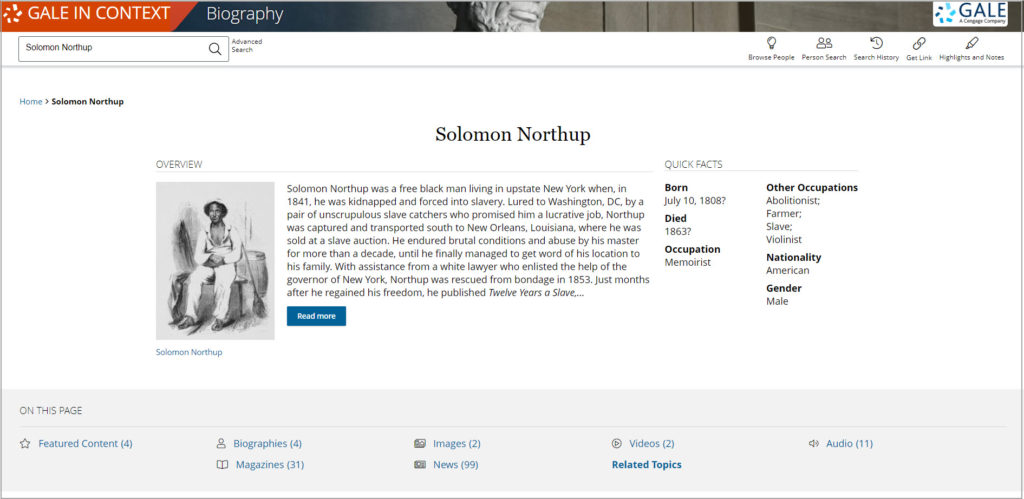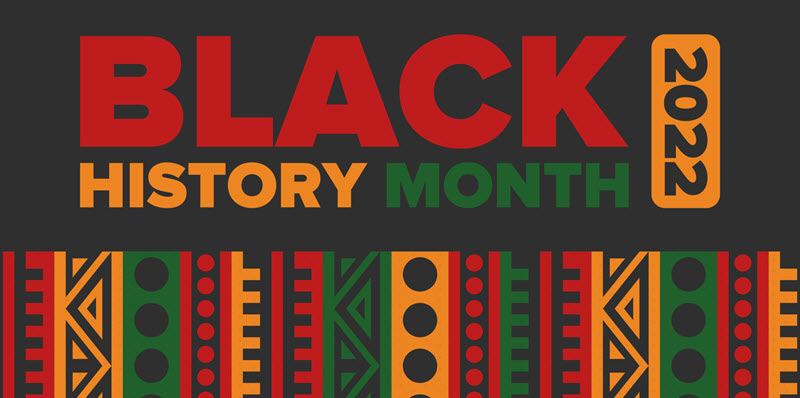| By Carol Brennan |
Alex Haley and Zora Neale Hurston. Maya Angelou and Toni Morrison. James Baldwin and James Weldon Johnson. The literature of Black Americans reveals a rich tapestry of lives and experiences, one that is celebrated around the globe all the way back to 1773, when British allies published a book of poetry by Phillis Wheatley, a Boston poet. Her achievement was mentioned by Jupiter Hammon, who penned verse as well as incendiary antislavery essays from Long Island during the Revolutionary War era.
There are thousands of writers who came after Wheatley and Hammon, and Gale In Context: Biography is the world’s most comprehensive source of information for all of them. During Black History Month 2022, readers can locate exquisitely detailed profiles on the lives and works of Angelou, Baldwin, and other literary giants, as well as informative articles about newcomers conquering today’s bestseller lists.
Jupiter Hammon’s supporters were active abolitionists, and as that political movement gathered momentum in the early nineteenth century, memoirs by enslaved Black Americans played a substantial role in propelling the antislavery movement forward. Accounts by Frederick Douglass and Solomon Northup are among the best-known examples, joining autobiographical legacies left by others, like Henry Box Brown, the Virginian who mailed himself to freedom in 1849.

By the early twentieth century, Black American journalists and newspaper publishers were flourishing, thanks to the enthusiasm of an emerging readership. Ida B. Wells and her investigative reporting on lynching in the South made the Chicago Defender newspaper one of the most-influential voices of the era. Equally historic was the campaign led by Robert L. Vann, publisher of the Pittsburgh Courier, who urged Black Americans of the 1930s to “turn Lincoln’s picture to the wall,” a reference to the commonplace portrait of U.S. President Abraham Lincoln, the first Republican Party candidate to win the White House. Vann and other progressives asked Black Americans to cast their ballots for Democratic Party candidates, which helped U.S. President Franklin D. Roosevelt win an unprecedented four terms in office.
Novelists like James Baldwin, Ralph Ellison, Richard Wright, Alice Walker, and Toni Morrison produced masterpieces that are required reading for all American teenagers and college students. Gale In Context: Biography also features biographical accounts of the careers of lesser-known writers, like Ann Petry, whose 1946 novel The Street cemented her place in American literary history as the first from a Black American woman to sell more than a million copies. A generation later, the missions carried out by U.S. foreign intelligence officer Sam Greenlee became the basis for the provocative plot of his 1969 work of fiction The Spook Who Sat by the Door, which is about an American spy who deploys his skills to assist a Black revolutionary movement at home.
The social justice movement that blossomed under the #BlackLivesMatter banner in recent years has given rise to a significant number of emerging voices. Among those propelled onto the bestseller lists are Ijeoma Oluo and her book So You Want to Talk about Race as well as Ibram X. Kendi’s How to Be an Antiracist.

The trove of fascinating stories inside Gale In Context: Biography make it an invaluable resource for all 12 months of the calendar.
Check back here every Monday this month to read more about some of the most remarkable influencers featured in Gale In Context: Biography or read the previous week’s contributions here.
Not a Gale In Context: Biography subscriber? Learn more about this authoritative database >>

About the Author
Carol Brennan has been writing biographical entries for Cengage/Gale since 1993. If she’s not writing, she is either at yoga or walking her dachshund. Carol consumes an alarming volume of podcasts and audiobooks weekly.

